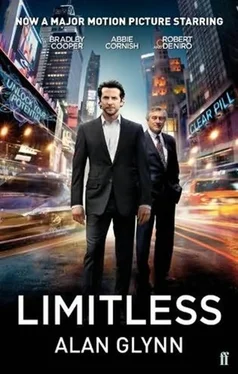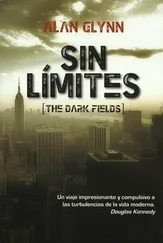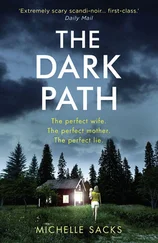Then he took off up Second Avenue without saying goodbye.
*
I crossed the street, and in line with my new strategy of trying to eat at least once a day, I went into a diner and had coffee and a blueberry muffin.
Then I wandered over to – and up – Madison Avenue. After about ten blocks, I stopped outside a realtor’s office, a place called Sullivan, Draskell. I went inside, made some enquiries and got talking to a broker by the name of Alison Botnick. She was in her late forties and was dressed in a stylish navy-blue silk dress with a matching Nehru coat. I realized pretty quickly that even though I was in jeans and a sweater, and could easily have been a clerk in a wine store – or a freelance copywriter – this woman had no idea who I was and consequently had to be on her guard. As far as Ms Botnick was concerned, I could have been one of those new dot-com billionaires on the look-out for a twelve-room spread on Park. These days you never knew, and I kept her guessing.
Walking up Madison, I had been thinking in the region of $300,000 for a place – $500,000 tops – but it occurred to me now that given my standing with Van Loon and my prospects with Hank Atwood there was no reason why I shouldn’t be thinking bigger – $2 million, $3 million, maybe even more. As I stood in the plush reception area of Sullivan, Draskell, thumbing through glossy brochures for luxury condos in new buildings called things like the Mercury and the Celestial, and listening to Alison Botnick’s pitch, with its urgent lexical hammer-blows – high-end, liquid, snapped-up, close, close, close – I felt my expectations rising by the second. I could also see Alison Botnick, for her part – as she morphed fifteen years off my frame and mentally dressed me in a UCLA T-shirt and baseball cap – convincing herself that I was a dot-com billionaire. The flames were stoked further when I casually shrugged off her suggestion that, given the storm of paperwork required these days to pass the average co-op board’s screening procedure, I would probably want to avoid a co-op apartment.
‘The boards are getting very picky,’ she said, ‘not that-’
‘Of course not, but who wants to be excluded without a fight?’
She assessed this.
‘OK.’
Our manipulation of each other into these respective states of acquisitive and professional arousal could only have led to one thing: viewings. She took me first to see a four-bedroom prewar co-op in the East Seventies between Lexington and Park. We went by cab, and as we chatted about the market and where it was ‘at’ right now, I had that pleasant sensation of being in control – and of being at the controls, as though I had designed the software for this little interlude myself and everything was running smoothly.
The apartment we went to view on Seventy-fourth was nothing special. It had low ceilings and didn’t have much natural light. It was also cramped and quite fussy.
‘A lot of these prewar co-ops are like this, you know,’ Alison said, as we made our way back down to the lobby. ‘They’ve got leaks and need to be rewired, and unless you’re prepared to just gut them and start over, they’re not worth the money.’
Which in this case was $1.8 million.
Next we went to see a 3,200-square-foot converted loft space in the Flatiron District. It had been a textile factory of some kind up until the’50s, had lain vacant for most of the’60s and from the way the place was decorated it didn’t look as if its present owner had made it much past the’70s. Alison said he was a civil engineer who’d probably paid very little for it, but was now asking $2.3 million. I liked it, and it certainly had potential, but it was huddled a little too anonymously in a part of town that was still relatively dull and unexciting.
The last place Alison took me to see was on the sixty-eighth floor of a condominium skyscraper that had just been built on the site of the old West Side rail yards. The Celestial, along with other luxury residential developments, was – in theory – to be the centrepiece of a new urban rejuvenation project. This would roughly cover the area between West Chelsea and Hell’s Kitchen.
‘If you take a look at it, there’s a ton of empty lots there,’ Alison said, sounding like a latter-day Robert Moses, ‘from Twenty-sixth Street up to Forty-second Street, west of Ninth Avenue – it’s ripe for redevelopment. And with the new Penn Station you’ll have a huge increase in traffic – thousands more people pouring in every day.’
She was right, and as our cab cruised west along Thirty-fourth Street, down towards the Hudson River, I could see what she was talking about, I could see the great potential there was for gentrification, for a huge bourgeois-boho makeover of the entire neighbourhood.
‘Believe me,’ she went on, ‘it’s going to be the biggest land grab this city has seen in fifty years.’
Rising up out of the wasteland of disused and neglected warehouse buildings, the Celestial itself was a dazzling steel-frame monolith in a seamless casing of reflective bronze-tinted glass. As the cab pulled up alongside a huge plaza at the foot of the building, Alison started reeling off stuff that she obviously felt I should know. The Celestial was 715 feet tall, had 70 storeys and 185 apartments – also several restaurants, a health club, a private screening room, dog-walking facilities, a ‘smart garbage’ recycling system… wine-cellar, walk-in humidor, titanium-sided roofdeck…
I nodded at all of this, as though mentally jotting it down for later scrutiny.
‘The guy who designed this place,’ she said, ‘is even thinking of moving in himself .’
The vast lobby area had pink-veined marble columns supporting a gold-toned mosaic ceiling, but little in the way of furniture or art works. The elevator took us up to the sixty-eighth floor in what felt like ten seconds, but must have been longer. The apartment she was showing me still had some work to be done on it, so I wasn’t to mind the bare light bulbs and exposed wiring. ‘ But …’ she turned to me and said in a whisper as she was putting the key in the door, ‘… check out the views…’
We stepped into an open, loft-style space, and although I was aware of various corridors going off in different directions, I was immediately drawn to the full-length windows on the far side of this bare, white room. There was plastic sheeting on the floor, and as I walked across it, Alison following just behind me, the whole of Manhattan rose dizzyingly up into view. Standing there at the window, I gaped out at the cluster of midtown skyscrapers directly ahead, at Central Park huddled up to the left, at the financial district over to my right.
Seen here from an angle that had a dreamlike quality of the impossible to it, all of the city’s land-mark buildings were in place – but they appeared to be facing, even somehow looking , in this direction.
I sensed Alison at my shoulder – smelled her perfume, heard the gentle swish of silk against silk as she moved.
‘Well,’ she said, ‘what do you think?’
‘It’s amazing,’ I said, and turned to look at her.
She was nodding in agreement, and smiling. Her eyes were a vivid green and glistened in a way that I hadn’t noticed before. In fact, Alison Botnick suddenly seemed a lot younger than I had imagined her to be.
‘So, Mr Spinola,’ she said, holding my gaze, ‘do you mind if I ask you what line of work you are in?’
I hesitated, and then said, ‘Investment banking.’
She nodded.
‘I work for Carl Van Loon.’
‘I see. That must be interesting.’
‘It is.’
As she processed this information, maybe slotting me into some real estate client category, I glanced around at the room with its bare walls and incomplete grid of ceiling panels, trying to imagine how it might look fully furnished, and lived in. I thought about the rest of the place, as well.
Читать дальше












